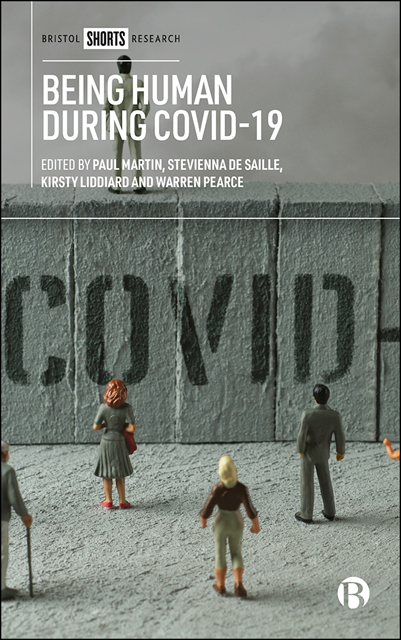eleven - Frailty and the Value of a Human in COVID-19 Times
Published online by Cambridge University Press: 13 October 2022
Summary
At the outset of the COVID-19 pandemic in the UK, the National Institute for Health and Care Excellence (NICE) produced a rapid guideline (NICE, 2020) for adult critical care that made frailty pivotal to assessments. It aimed ‘to maximise the safety of patients who need critical care during the COVID-19 pandemic [and] … make the best use of NHS resources’. Consequently, ‘frailty’ became key to both avoiding interventions with the potential to cause harm and, implicitly, to rationing access to care.
What is frailty, how did it become a central construct for making care assessments during the pandemic, and what are the implications of the increasing currency of this concept within healthcare? In this chapter we consider these questions and the multiple constructions of the frail ageing human that emerge from this. We draw on research, media, official reports, and excerpts from an ethnography undertaken on hospital wards before the pandemic.
While frailty has long existed in the vernacular, it has recently emerged as a clinical object around which healthcare is increasingly organized. Clinical conceptualizations of frailty consolidate around a phenotype and a deficit accumulation model. The phenotype depicts frailty as a syndrome comprising characteristics such as weight loss and slow walking speed. The deficit accumulation model has had various incarnations, most recently as the Clinical Frailty Scale (CFS), which positions people on a functional continuum, with assessments aided by descriptors and illustrations.
Efforts to define frailty have transformed it from something ‘we know when we see it’ into something that can be measured, evaluated, and incorporated into policy. As a clinical concept, frailty is used increasingly for planning and making prognoses, far beyond its origins in geriatric medicine. For example, in England in 2017/18, frailty screening for those aged 65 and over was contractually introduced in general practice, resulting in an automatic categorization of ‘frail’, ‘pre-frail’ or ‘robust’, according to electronic health data (Tomkow, 2020).
Social scientists have repeatedly problematized the language of frailty, showing the term to have multiple and evolving meanings, but nevertheless consistently understood by those who are labelled as frail to be pejorative, stigmatizing and disempowering (Grenier, 2007; Shaw et al, 2018).
- Type
- Chapter
- Information
- Being Human during COVID-19 , pp. 92 - 99Publisher: Bristol University PressPrint publication year: 2022



